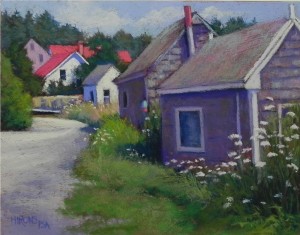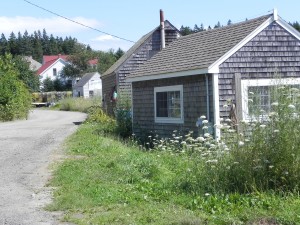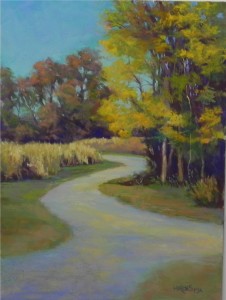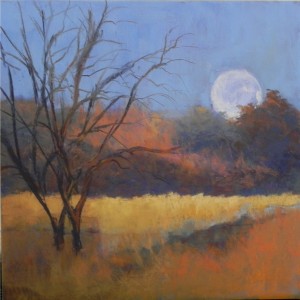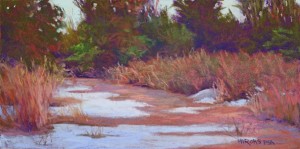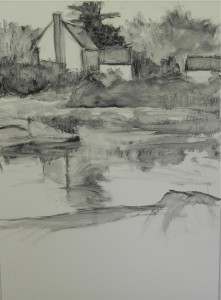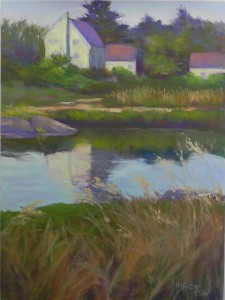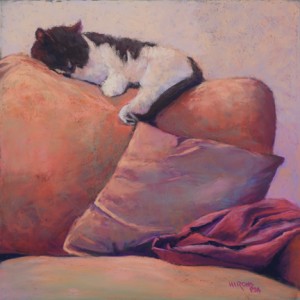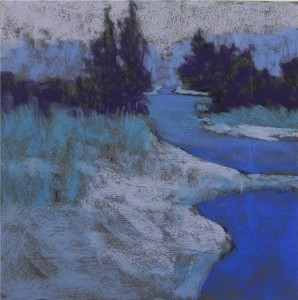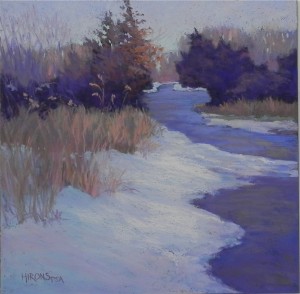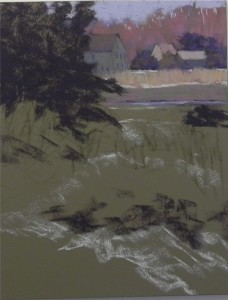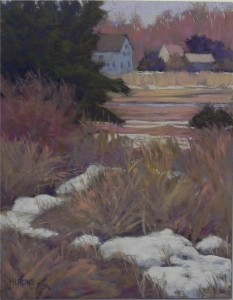My latest painting was begun on Monday during our latest snow event. I’ve been looking at this photo from Maine for some time. I really liked the way the planes of the buildings lead the eye back into the area where there are sunlit houses and red roofs. However, the dull, gray, weather beaten shingled buildings scared me–and that large expanse of roof as well! I decided to use a re-used Pastelbord on which I had applied two coats of reddish-toned AS Colourfix liquid primer. This had the advantage of creating subtle lines, that show in the roof (maybe not in this image though). Using the 11 x 14, which is squarer than the photo, allowed me to shorten the foreground building. I then made the window smaller and when painting, used many colors in the siding and roof. I learned years ago that there is nothing more boring than a large expanse of roof that is all the same! So I used warm and cool colors of the same value (pinks, oranges, greens, and aqua) to lay in color and provide a more interesting surface. On a completely different note, I’m very honored to be included in the latest issue of the Pastelagram, the magazine of the Pastel Society of America. I’m featured as someone who paints buildings in the landscape, so I’m glad that I’ve returned to buildings for a bit! Thanks to editor Robert Carsten for including me.

